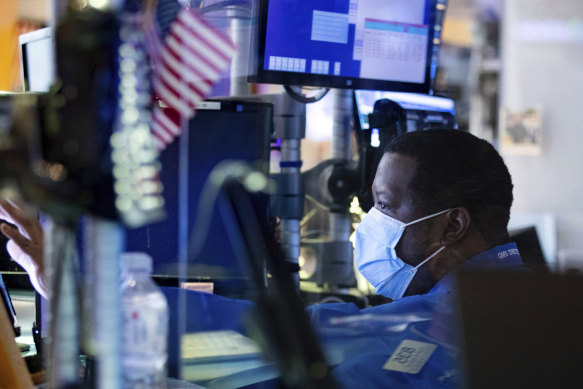The key question for the Fed, and the other major central banks (other than, perhaps, the ECB which has to deal with the continuing impacts of the war) is whether they can continue to bring inflation rates down towards their targeted ranges of two to three per cent without bringing on recessions.
The fact that the US economy was growing at a respectable rate towards the end of last year suggests a soft landing is possible.
That will be dependent on what the Fed does this week and at future meetings and how it manages the balance of risks between avoiding a new surge in the inflation rate by relaxing policy too early and plunging the US into recession by hiking rates higher for longer than is necessary to engineer a soft landing.

The US economy is desperate for a “soft” landing.Credit:Bloomberg
A similar dilemma will confront the Reserve Bank when it meets next week, even though the headline Australian inflation rate is, at 7.8 per cent, the highest in more than three decades.
More rate rises appear inevitable, although the RBA has so far been more cautious than its US counterpart and, while the inflation rates remain unpalatably high, the December data did come in slightly below the RBA’s own forecasts.
Loading
The US markets aren’t convinced the Fed can pull off the tricky task of producing a “Goldilocks” outcome.
The US yield curve is inverted, with yields on the longer-dated securities lower than those with shorter maturities. Normally it’s the other way around, with the longer-dated bonds, like the 10-year bond, yielding more than the short-dated bills and notes to reflect the risk of holding them for longer.
An inversion of the yield curve has preceded every US recession in the past half a century, although not every inversion has been followed by a recession. The markets have priced in, however, a more than 60 per cent chance that there will be one this time.
Effectively they are signalling that their participants believe the Fed’s chair, Jerome Powell, and his colleagues will, in order to permanently suppress price pressures, err on the conservative side and raise rates more than they should and leave them there longer than they should, if a recession is to be avoided.

The US markets aren’t convinced the Fed can pull off the tricky task of producing a “Goldilocks” outcome.Credit:AP
The same delicate equation of inflation versus economic growth and the avoidance of social distress confronts all the central bankers.
That equation isn’t an easy one to resolve, given that there are external influences over inflation rates as well as the domestic settings.
The re-emergence of China’s economy from its zero-COVID hibernation will, for instance, help finally deal with the remaining supply chain glitches that have been a feature of the global economy since the onset of the pandemic and which contributed significantly to the ignition of rampant global inflation.
The global effects of the reopening should also be reflected in a rise in the volume of relatively low-cost manufactured products whose supply has been erratic over the past year because of the rolling lockdowns China’s factories experienced.
The risk of China’s re-opening, however, is that its demand for commodities to fuel stronger economic growth, particularly its demand for oil and gas, will create a new source of inflationary pressures.
What the leaders of three of the four most important central banks (Japan is the other one) do and say this week will have a major bearing on the outlook for the global economy and markets for the rest of the year.
China’s weak demand last year was a major factor in offsetting the impact of the war in Ukraine on oil prices and what might otherwise have been oil prices well north of $US100 a barrel. Central banks, including China’s, will be wary about the implications of its rebounding demand for the raw materials of industrial production.
The view that the Fed, in particular, is close to its peak, or “terminal” interest rate is buttressed by the fact that, if the federal funds target range of 4.25 per cent to 4.5 per cent is raised by the 25 basis points expected, the fed will have moved into “real” interest rate territory, with its rate above all the yields from Treasury securities.
At the moment, the markets are pricing in no surprises from the Fed meeting.
Loading
Anything other than a 25 basis point rise and “dovish” commentary from Powell at his press conference would be a shock to the markets, particularly the sharemarket where stocks are up almost 6.5 per cent since the start of the year and nearly 14 per cent from last year’s October low point.
What the leaders of three of the four most important central banks (Japan is the other one) do and say this week will have a major bearing on the outlook for the global economy and markets for the rest of the year.
There’s a lot riding on whether, with inflation rates appearing to have peaked, they can finesse the tapering of their policies and the language around them to produce something other than recession and the unemployment and lasting damage to individuals and businesses that recessions bring.
Stay connected with us on social media platform for instant update click here to join our Twitter, & Facebook
We are now on Telegram. Click here to join our channel (@TechiUpdate) and stay updated with the latest Technology headlines.
For all the latest Business News Click Here
For the latest news and updates, follow us on Google News.
